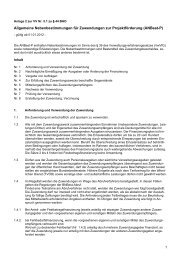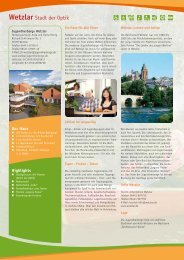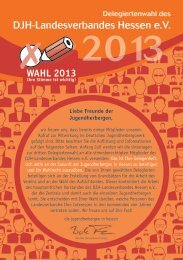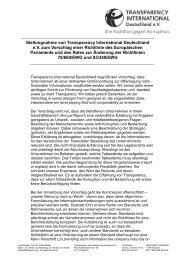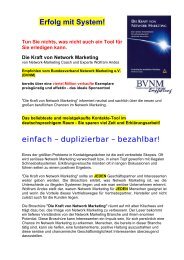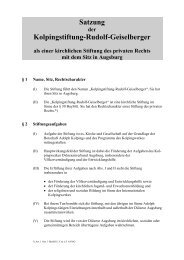REPA Booklet - Stop Epa
REPA Booklet - Stop Epa
REPA Booklet - Stop Epa
Create successful ePaper yourself
Turn your PDF publications into a flip-book with our unique Google optimized e-Paper software.
7<br />
Recasting the ACP in Europe’s Image<br />
Why did the European Union favour the idea of ‘differentiated reciprocity’?<br />
They believed that Europe’s model of regional economic integration could and should be adapted across the<br />
ACP. The process of creating an integrated market economy would help the ACP States to speed up neoliberal<br />
reform and socio-economic transformation, and dilute the disruptive impacts of ‘dysfunctional’ states:<br />
The creation of political and economic areas which go beyond national boundaries has been<br />
recognized as a necessary step for Europe and is so for the ACP States as well. The path of regional<br />
cooperation and integration seems advisable not only because of the generally inadequate economic<br />
size of many ACP countries but also because such an option can encourage political leaders to<br />
adopt a more strategic approach to developing their economies. It is also likely to speed up the<br />
socioeconomic transformations which are needed to develop a market economy and do away with<br />
clientelist structures often organized on a national basis.<br />
“In the Green Paper<br />
the Caribbean is an<br />
aside and the Pacific<br />
an afterthought,<br />
bordering on a<br />
footnote.”<br />
(Grynberg 1997)<br />
So ACP States should model themselves on the European Union?<br />
Apparently. This ignored the fact that European economic integration was an incremental process, driven by<br />
unique historical, economic and political circumstances over almost 50 years. The Green Paper assumed that<br />
the EU could be artificially replicated in the diverse, poverty-stricken and non-industrialised sub-regions of<br />
Africa, the Caribbean and Pacific within an externally imposed deadline of 2008 plus 10 years for implementation.<br />
How did the European Commission plan to divide the ACP into regions?<br />
The Green Paper spent many pages setting out the sub-regional configurations for Africa, ignoring the effect on<br />
Africa’s own strategies for regional integration if they had to negotiate with the Commission according to its plan.<br />
Where did the Pacific Islands fit into the Europeans’ new scheme?<br />
The Pacific Islands were largely invisible. The Green Paper was really the Europeans’ plan for Africa,<br />
especially Sub-Saharan Africa. It made occasional references to the Caribbean, but even these seemed token.<br />
In a document of more than 70 pages the Pacific Islands appeared in three short paragraphs. These exposed<br />
an appalling mix of ignorance and disinterest. One paragraph, for instance, was about ‘emerging economies<br />
[that have] shown themselves capable of reform’. It had one sentence on the Pacific, which said ‘In the Pacific,<br />
PNG has, since 1989, participated in the APEC-led liberalisation process’. But PNG only joined APEC in 1992<br />
and its (failed) neoliberal reforms had been adopted because of debt conditionalities. The Individual Action Plan<br />
it produced for APEC was not produced until 1995, and the promises it made for more privatisations, etc were<br />
quite unrealistic.<br />
What regional integration agreements did the Commission expect the Pacific Islands to build on?<br />
That was another example of poor knowledge and/or disinterest, and seemed to relate more to the European’s<br />
interests than to those of the Pacific Islands.<br />
The ACP States of the Pacific are all members of regional organizations which are relatively welldeveloped<br />
at economic and political level, as well as technical level. Effective cooperation with this<br />
region of the world would mean extending the framework of cooperation to other island states in the<br />
Pacific. In this extended framework, the Community’s interests lie in two specific areas: preservation<br />
of the environment and of the region’s considerable natural resources and trade promotion, especially<br />
with APEC countries.<br />
But the only regional organisation that all Pacific ACP States belonged to in 1996 was the Pacific Islands Forum,<br />
whose Leaders did not resolve to ‘embrace globalisation’ until 1997 and then in a very undeveloped form. The<br />
Melanesian Spearhead Group trade agreement was not signed until 1998 and only covered four Islands. PNG<br />
was the only Pacific Island member of APEC.<br />
Didn’t the Green Paper recognise the special vulnerabilities of the Pacific Islands?<br />
One paragraph refers to ‘Problems peculiar to the small island economies of the Pacific’. It made no attempt to<br />
explain these problems, beyond saying that:<br />
These countries have every interest in gearing themselves to the booming economies of the “Pacific<br />
Rim”, with the support of Australia and New Zealand. Problems relating to transport and<br />
communications, on the one hand, and the environment and preservation of natural resources as<br />
the main economic resource, on the other, will require particular attention.<br />
20<br />
A People’s Guide To The Pacific’s Economic Partnership Agreement



